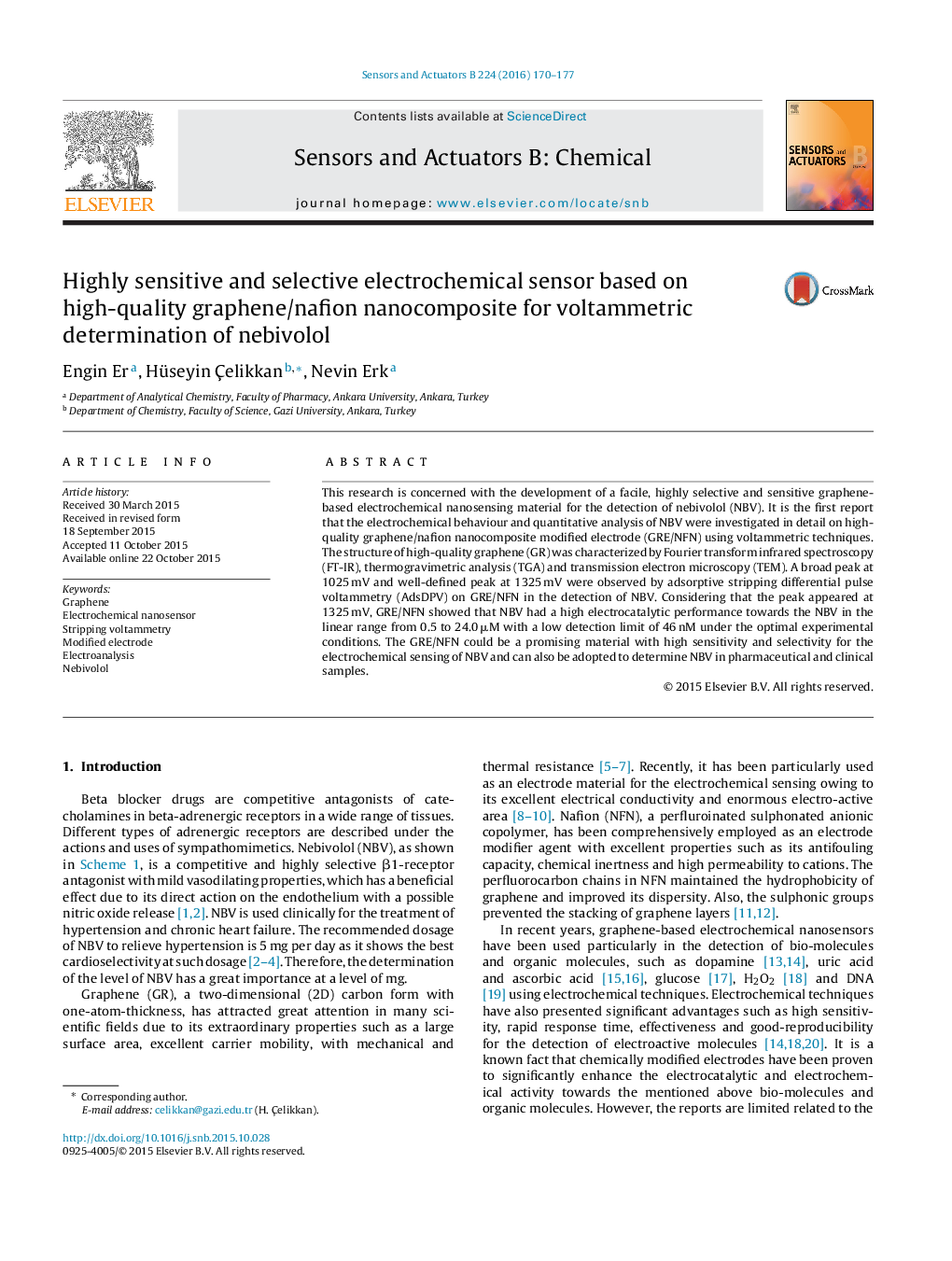| Article ID | Journal | Published Year | Pages | File Type |
|---|---|---|---|---|
| 750474 | Sensors and Actuators B: Chemical | 2016 | 8 Pages |
•A new generation nanosensor based on high-quality graphene was constructed for electroanalysis of NBV.•For the first time, the electrochemical behaviour of NBV was investigated using voltammetric techniques.•High-quality graphene used in this study has the best heterogeneous transfer rate value among the carbon-based electrode up to now.•GRE/NFN nanosensor showed high electrocatalytic activity and sensitivity towards the oxidation of NBV.•GR/NFN nanocomposite provided a promising platform for NBV sensing.
This research is concerned with the development of a facile, highly selective and sensitive graphene-based electrochemical nanosensing material for the detection of nebivolol (NBV). It is the first report that the electrochemical behaviour and quantitative analysis of NBV were investigated in detail on high-quality graphene/nafion nanocomposite modified electrode (GRE/NFN) using voltammetric techniques. The structure of high-quality graphene (GR) was characterized by Fourier transform infrared spectroscopy (FT-IR), thermogravimetric analysis (TGA) and transmission electron microscopy (TEM). A broad peak at 1025 mV and well-defined peak at 1325 mV were observed by adsorptive stripping differential pulse voltammetry (AdsDPV) on GRE/NFN in the detection of NBV. Considering that the peak appeared at 1325 mV, GRE/NFN showed that NBV had a high electrocatalytic performance towards the NBV in the linear range from 0.5 to 24.0 μM with a low detection limit of 46 nM under the optimal experimental conditions. The GRE/NFN could be a promising material with high sensitivity and selectivity for the electrochemical sensing of NBV and can also be adopted to determine NBV in pharmaceutical and clinical samples.
Graphical abstractFigure optionsDownload full-size imageDownload as PowerPoint slide
